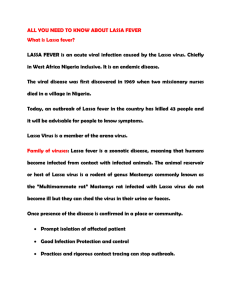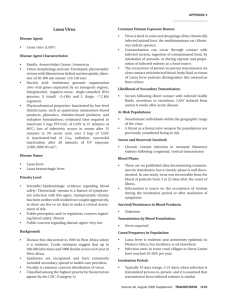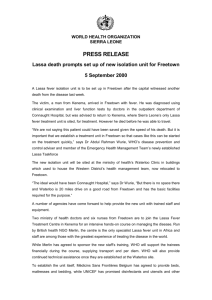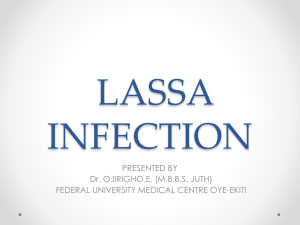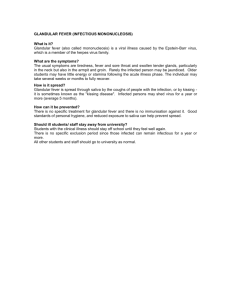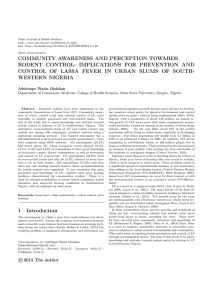In what animal host is Lassa virus maintained? The host is a rodent
advertisement
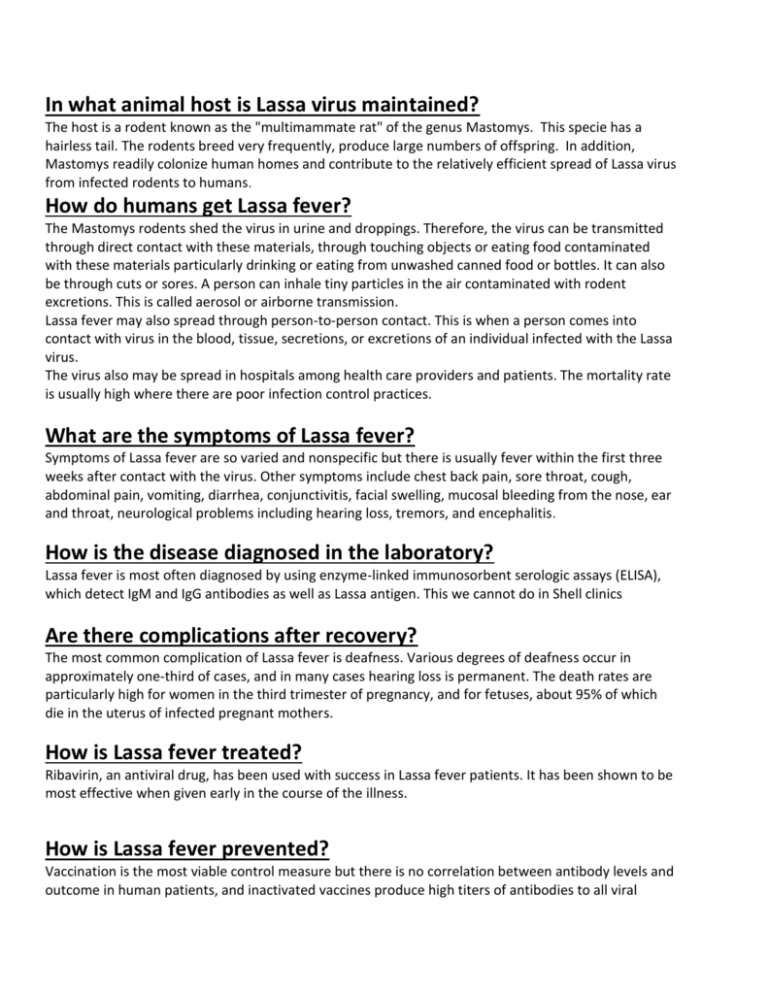
In what animal host is Lassa virus maintained? The host is a rodent known as the "multimammate rat" of the genus Mastomys. This specie has a hairless tail. The rodents breed very frequently, produce large numbers of offspring. In addition, Mastomys readily colonize human homes and contribute to the relatively efficient spread of Lassa virus from infected rodents to humans. How do humans get Lassa fever? The Mastomys rodents shed the virus in urine and droppings. Therefore, the virus can be transmitted through direct contact with these materials, through touching objects or eating food contaminated with these materials particularly drinking or eating from unwashed canned food or bottles. It can also be through cuts or sores. A person can inhale tiny particles in the air contaminated with rodent excretions. This is called aerosol or airborne transmission. Lassa fever may also spread through person-to-person contact. This is when a person comes into contact with virus in the blood, tissue, secretions, or excretions of an individual infected with the Lassa virus. The virus also may be spread in hospitals among health care providers and patients. The mortality rate is usually high where there are poor infection control practices. What are the symptoms of Lassa fever? Symptoms of Lassa fever are so varied and nonspecific but there is usually fever within the first three weeks after contact with the virus. Other symptoms include chest back pain, sore throat, cough, abdominal pain, vomiting, diarrhea, conjunctivitis, facial swelling, mucosal bleeding from the nose, ear and throat, neurological problems including hearing loss, tremors, and encephalitis . How is the disease diagnosed in the laboratory? Lassa fever is most often diagnosed by using enzyme-linked immunosorbent serologic assays (ELISA), which detect IgM and IgG antibodies as well as Lassa antigen. This we cannot do in Shell clinics Are there complications after recovery? The most common complication of Lassa fever is deafness. Various degrees of deafness occur in approximately one-third of cases, and in many cases hearing loss is permanent. The death rates are particularly high for women in the third trimester of pregnancy, and for fetuses, about 95% of which die in the uterus of infected pregnant mothers. How is Lassa fever treated? Ribavirin, an antiviral drug, has been used with success in Lassa fever patients. It has been shown to be most effective when given early in the course of the illness. How is Lassa fever prevented? Vaccination is the most viable control measure but there is no correlation between antibody levels and outcome in human patients, and inactivated vaccines produce high titers of antibodies to all viral proteins but do not prevent virus replication and death in nonhuman primates . Therefore the value of vaccination against Lassa has not been established and documented. Putting food away in rodent-proof containers and keeping the home clean help to discourage rodents from entering homes. Using these rodents as a food source is not recommended. Trapping in and around homes can help reduce rodent populations. However, the wide distribution of Mastomys in Africa makes complete control of this rodent reservoir impractical. When caring for patients with Lassa fever, further transmission of the disease through person-toperson contact can be avoided by taking preventive precautions against contact with patient secretions. Such precautions include wearing protective clothing, such as masks, gloves, gowns, and goggles; using infection control measures, such as complete equipment sterilization; and isolating infected patients from contact with unprotected persons until the disease has run its course. The use of household bleach is highly recommended for mopping the floors and cleaning of equipments and also horizontal surfaces.

